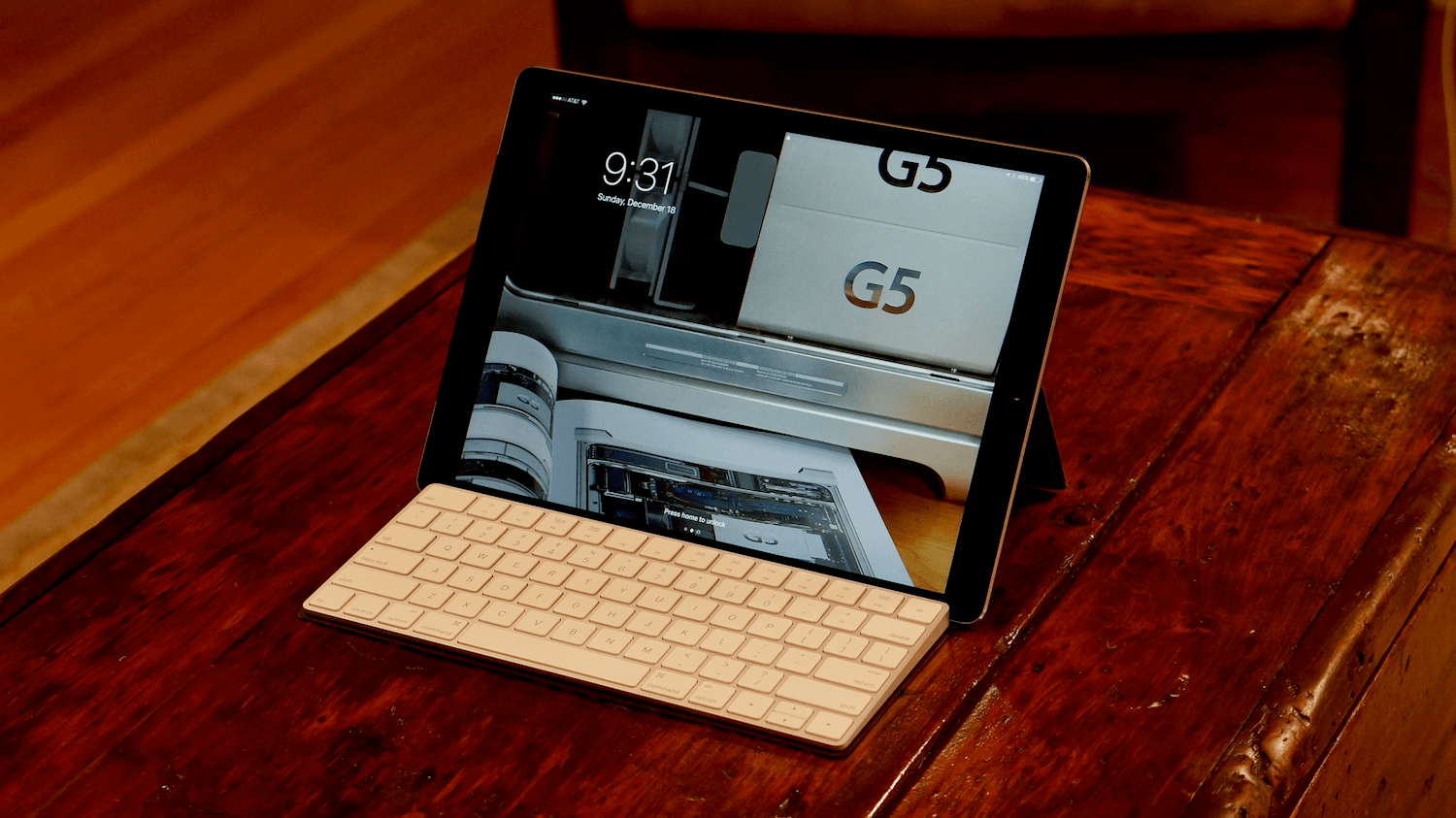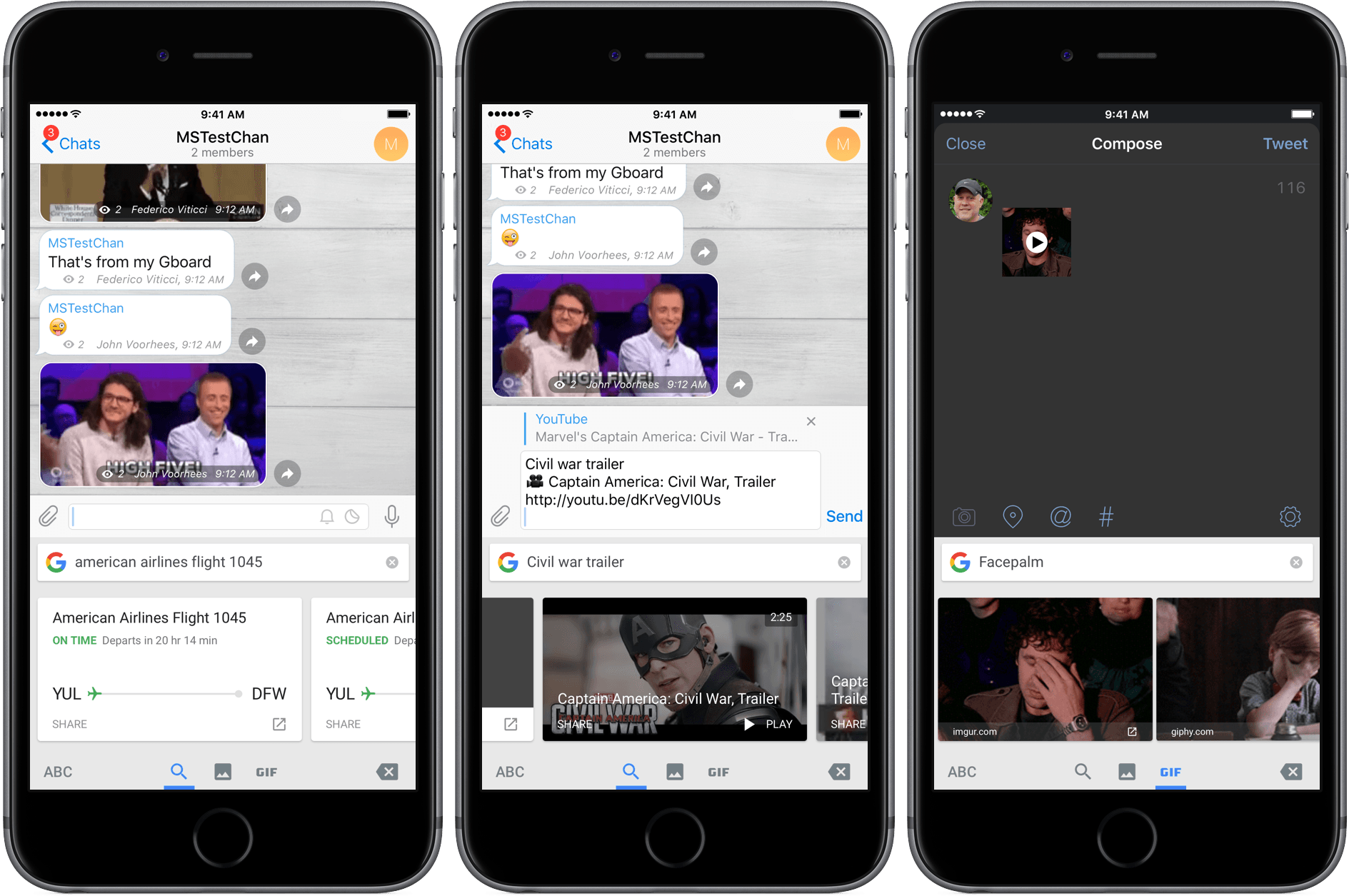I’ve been carrying Studio Neat’s new Canopy, a combination keyboard case and iPad stand, for about a week. It’s the first time Apple’s Smart Keyboard has been off my iPad Pro since I got it, but I haven’t missed it at all. There are still certain situations where I prefer the Smart Keyboard, but I love having the option to work on my iPad with Apple’s Magic Keyboard when it suits my needs. So, while I won’t be switching to a Magic Keyboard/Canopy combination full-time, it’s a choice I’m glad to have and one I will use frequently.
Posts tagged with "keyboard"
Canopy Keyboard Cover and iPad Stand Review
My New iPad Pro Keyboard: The Razer Mechanical Keyboard Case
Since getting a 12.9-inch iPad Pro last year, I’ve had a fairly troubled relationship with external iPad keyboards. I didn’t like the original Logitech CREATE keyboard case, so, surprised by the lack of notable Smart Connector-based accessories, I ended up using an Apple Magic Keyboard for the majority of 2016.
How the Touch Bar Works→
Good overview of the Touch Bar and its developer API by Benjamin Mayo:
Developers can display pretty much whatever they want whilst their app is in the foreground; this includes swapping out views and buttons depending on the current window of their app (a compose window necessitates different Touch Bar accessory views than the inbox window). However, the Touch Bar does not allow persistent widgets, status items or similar features like always-visible news tickers. These constraints are unlikely to be lifted either; Apple is imposing the restriction so that the UI under the user’s finger isn’t constantly changing due to spurious notifications or text messages.
Apple wants the bar to display peaceful relatively-static UI based on the current task. Major changes to the Bar should only happen when the application state drastically changes, such as opening a new tab or beginning a new modal activity. To repeat: once an app’s window is not active, it loses its control to influence what is shown on the Bar. The system Control Strip sits to the right in a collapsed state by default, but can be disabled entirely in System Preferences if desired.
This makes sense to me: the Touch Bar is intended to be an extension of the keyboard that deals with input – it’s not a smaller Dashboard or a widget container. This means that apps like PCalc won’t be able to persistently display their controls in the Touch Bar unless they’re the frontmost (active) app.
The more I think about it, the more the Touch Bar feels like the natural evolution of QuickType and the Shortcut Bar from iOS – to the point where I wonder if we’ll ever get this kind of evolution on the iPad Pro as well (where the current app is always the frontmost one and system controls could use a faster way to be engaged than Control Center). Perhaps with a new external keyboard with its own embedded Touch Bar and T1 chip?
Gboard Adds 3D Touch Cursor Movement, Contacts Integration→
Google released a nice update to their iOS keyboard, Gboard, earlier today.
Cursor control can now be activated with 3D Touch, which is consistent with the behavior of Apple’s keyboard. Gboard can’t move the cursor freely on the screen like the system keyboard, though, which makes it more limited when it comes to swiping across multiple lines of text. Also, Google didn’t implement haptic feedback when switching between contextual keyboard menus (such as holding down on the dash key), which is another detail that I appreciate in Apple’s keyboard on the iPhone 7.
Similarly, Gboard now features Contacts integration to look up a person’s contact card directly from the keyboard – but it’s not as tightly integrated as QuickType suggestions in iOS 10. However, I prefer the presentation of contact cards in Gboard and I think Google’s is a sweet solution as well.
Gboard is shaping up nicely, but I continue to wish Google paid more attention to the iPad layout and built true multilingual support for international users.
Gboard Adds Support for Multiple Languages→
Nice update to Google’s custom keyboard for iOS released today on the App Store:
Gboard is already available in English across the U.S., Europe, Canada and Australia. Starting today, Gboard is ready to start sending GIFs, searches, emojis and more for our friends who speak French, German, Italian, Portuguese (Brazil and Portugal) and Spanish (Spain).
Gboard’s emoji search is the best way to search for any emoji I’ve tried on iOS. iOS 10’s predictive emoji suggestions aren’t even close to the Gboard’s emoji features. I was hoping iOS 10 would have proper emoji search – maybe next year.
But I’m surprised that Google hasn’t shipped an actual multilingual keyboard to type in two languages simultaneously. You have to switch between international layouts inside Gboard – just like in Apple’s current keyboard for iOS 9. By contrast, iOS 10’s upcoming multilingual keyboard is downright amazing, and I can’t go back to keyboards without multilingual support now.
Localized iPad Pro Smart Keyboards Arrive→
Apple has introduced new Smart Keyboards for the iPad Pro with localized layouts for several languages. According to 9to5Mac, the localized Smart Keyboards include British English, French, Spanish, Italian, Arabic, and others. The keyboards are available to fit both the 9.7 and 12.9 inch models of the iPad Pro and are available from Apple’s websites in the countries where the applicable languages are spoken, along with the existing US English version of the keyboards.
Razer Launches Mechanical Switch Keyboard for iPad Pro
Razer, best known for making mice and keyboards for gamers, announced a keyboard case for the 12.9” iPad Pro that features mechanical backlit keys with twenty levels of brightness and a kickstand that allows for multiple viewing angles. Razer’s keyboard, dubbed the Razer Mechanical Switch Keyboard, connects over Bluetooth and includes what Razer calls an Ultra-Low-Profile Mechanical Switch that it says delivers ’the exact same performance and feel as a full-fledged mechanical keyboard.’ With backlighting enabled, Razer estimates you will get 10 hours of battery life. With backlighting turned off, however, Razer says its keyboard will last a whopping 600 hours. Razer’s keyboard is available for purchase in the US for $169.99 with other countries to follow.
Improving Keyboards for iOS→
Regy Perlera has some ideas for improving how third-party keyboards are installed on iOS and how users could switch between them. I think we’re not going to see any meaningful improvements to custom keyboards next week, but I’d love to be proven wrong.
I also realized that “improving keyboards” is something I’ve linked quite a bit on MacStories over the years.
Google Releases Gboard, a Search Keyboard for iOS
Despite some shortcomings in the way iOS handles third-party keyboards, they seem to have taken off recently. Just in the last month Microsoft’s Garage project released the Hub keyboard and Word Flow. Now, Google’s getting into the keyboard game with Gboard, which lets you search Google for all sorts of information.
I’ve only been playing around with Gboard for a short time, but the results have been impressive. Gboard solves a common problem on mobile devices – sharing information. Whether you’re using Twitter, email, or a chat client, it’s not uncommon to have to leave the app you are using to find the information you want to share, whether that’s a location, a GIF, a photo, or even something like a stock price or the weather.






